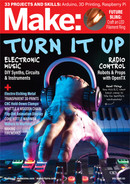
PROJECTS: Amateur Scientist
Nevada from his Texas bedroom! The judges at
the Alamo Area Science and Engineering Fair
in San Antonio were so impressed he received a
record number of awards.
Vicki wanted to use a Geiger counter to detect
solar flares. When a NASA scientist told her that
wouldn’t work, I told her that meant it might. Vicki
conducted her project in 1989, a year with record
solar activity, and she detected a dozen X-class
solar x-ray flares. Her project became a chapter
in a book about observing the sun.
Sarah earned many science fair awards for her
research on urban heat islands across Texas, and
Saharan dust over the field by our house. While
attempting to use 3M Petrifilm to detect microbes
in Asian dust arriving at our field, she found many
mold spores and bacteria when the wind was
from the south, not the west. Dust expert Prof.
Tom Gill told Sarah her finding was not from
Asian dust that occasionally blows across Texas.
He explained that satellite images showed the
likely source was biomass smoke arriving across
the Gulf of Mexico from Yucatan.
Sarah tested the possibility that living bacteria
and spores could be found in smoke by burning
dry grass in a steel trash can. The Petrifilms she
suspended in the smoke (Figure
D
) were loaded
with colonies of bacteria and fungi.
I twice drove Sarah to the Gulf Coast, where
she flew a microscope slide mounted inside a
plastic cup suspended from a kite (Figures
E
and
F
). On a day when there was considerable
biomass burning in Yucatan and the wind was
from the south, the microscope slide was coated
with numerous smoke particles and spores. On a
day when there was no burning in Yucatan, only a
few smoke particles and spores were on the slide.
Sarah’s discovery became an award-
winning science fair project (“Smoke Bugs”)
and a peer-reviewed, “Fast Track” paper in
Atmospheric Environment, doi:10.1016/j.
atmosenv.2003.10.043 (patarnott.com/atms360/
pdf_atms360/04034Mims.pdf). NASA posted
an article about her discovery (nasa.gov/vision/
earth/everydaylife/Smoking_Surprise.html).
The Smithsonian Museum of Natural History
displayed a poster about Sarah’s discovery,
and the Smithsonian Environmental Research
Center posted an article about it (forces.si.edu/
The invention Fry remembered was a weak
adhesive developed several years earlier by his
3M colleague Spencer Silver. When Fry applied
some of Silver’s adhesive to slips of paper, they
instantly stuck to bare paper and could be easily
removed without causing damage. The Post-it
Note had arrived (Figure
C
). Today more than
1,000 Post-it products are sold in 150 countries.
MIMS FAMILY SERENDIPITY
Makers often experience serendipity as they
develop their projects. My three children did many
award-winning science fair projects during their
school years. In every case, their best projects
were enhanced by or even based on serendipity.
Eric wanted to build a new kind of seismometer
that used a weight suspended from an optical
fiber to detect earthquakes, but a geologist he
consulted expressed skepticism. Why? Our Texas
house is built over soil and not rock. I told Eric
that meant his idea would work, for our house
has a concrete foundation.
After Eric bolted his optical fiber seismometer
to his bedroom floor and connected it to his
computer, he began detecting seismic events
ranging from heavy trucks and trains a mile away
to earthquakes thousands of miles away.
His major success was serendipitous, for he
also detected two underground nuclear tests in
C
102 makezine.com
E
Art Fry invented Post-It Notes — using an adhesive
accidentally invented by 3M colleague Spencer Silver.
Signe Dons, Public domain, via Wikimedia Commons, Forrest Mims, Grae Roth
M85_100-3_AmSci_F1.indd 102M85_100-3_AmSci_F1.indd 102 4/10/23 2:02 PM4/10/23 2:02 PM
..................Content has been hidden....................
You can't read the all page of ebook, please click here login for view all page.
